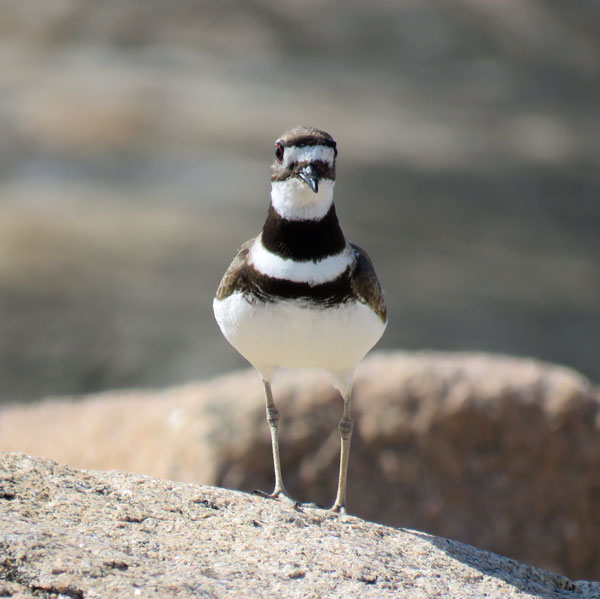
I submitted my sighting of this banded American Oystercatcher to the American Oystercatcher Working Group and have now recieved a history of this bird’s travels. He was caught on Cape Cod in July of 2012 and has been spotted along the shoreline from the Cape down here to southeastern Connecticut and southern Rhode Island over the past nine years. 🙂 Thank you so much, Donna, for letting me know I could do this!

Fort Trumbull State Park, New London, Connecticut
On a visit to Fort Trumbull last week the northern mockingbird, above, landed on top of the rampart while we were up there enjoying the views. I was surprised to see one so high up as the ones I’ve seen so far have been on the ground.
Monday night at the beach seemed to be reserved for ring-billed gulls. I looked in vain for the Captain and for any laughing gulls. Looking back now at my older posts I’ve noticed that all my pictures of laughing gulls are dated August and September so perhaps that’s when they ususally show up here. I’m learning.

Tim noticed several osprey flying above the Thames River estuary but we couldn’t identify them until we got home and the helpful people from the What’s This Bird? Facebook group assisted us. 🙂


The sky was gray and hazy from the smoke from the fires out west. We’ve been under an air quality alert. The birds have no choice but to breathe this air, though.


I almost missed the tiny killdeer skittering about on the island in the estuary. They’re fuzzy because they were on the move and the island was so far away from my camera!







I started feeling a little nostalgic as we walked around. Years ago I was so busy keeping an eye on my children at the beach that I didn’t notice the shorebirds. But as I watched the lifeguards gathering up their equipment for the day, the sights and sounds and smell of the salty air filled me with a longing for those happy summer days so long ago…






































































































